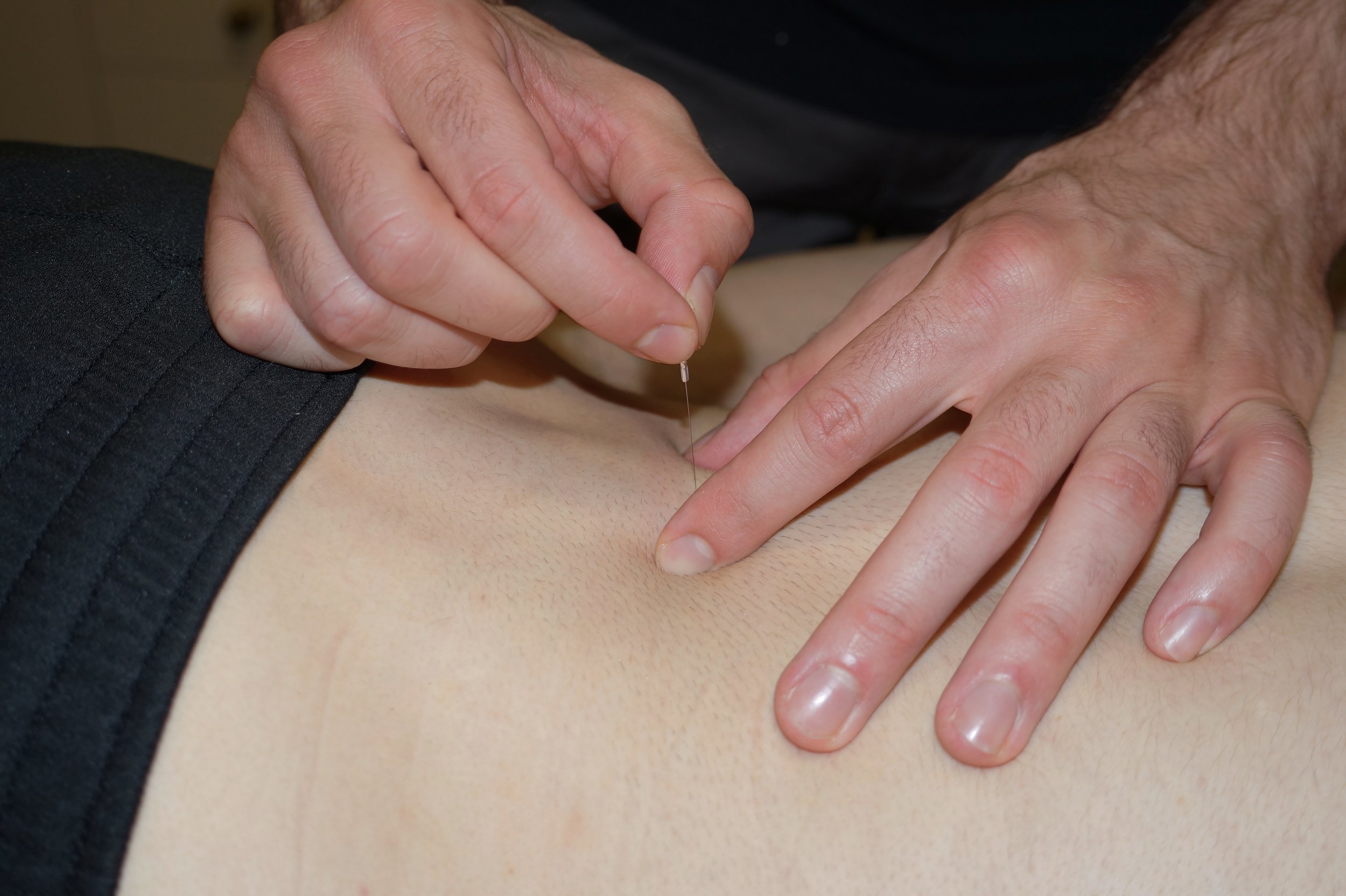
Dry Needling
Alleviating pain, reducing muscle tesion, promote healing
If you’ve ever visited a physiotherapist for muscle pain, tightness, or injury, you may have heard about a treatment option called dry needling. This technique is becoming increasingly popular in physiotherapy clinics as a way to relieve pain, improve movement, and aid recovery. But what exactly is dry needling, and how does it work?
In this article, we’ll explore what dry needling actually does, how it compares to acupuncture, and what alternatives exist.
What Does Dry Needling Actually Do?
Dry needling involves inserting fine, thin needles into specific points of the body, primarily in tight or knotted muscles known as trigger points. The goal is to stimulate a healing response in the body, reduce muscle tension, and improve blood flow to the affected area. This can help relieve pain, promote flexibility, and restore function.
When the needle is inserted into a trigger point, it causes a small, controlled twitch in the muscle, which may feel like a brief cramp. This reaction helps release the tight muscle, making it more pliable and less painful. By targeting these trigger points, dry needling helps with conditions such as back pain, neck pain, headaches, and sports injuries.
What is the Difference Between Acupuncture and Dry Needling?
While both dry needling and acupuncture involve inserting needles into the body, they are distinct therapies with different principles and purposes.
Dry Needling is based on Western medicine and focuses primarily on the musculoskeletal system. It targets trigger points within muscles and aims to relieve pain, improve muscle function, and assist in recovery from injury.
Acupuncture, on the other hand, has its roots in traditional Chinese medicine. It aims to balance the flow of energy (known as “qi”) through the body by targeting specific points along energy pathways, or meridians. While acupuncture can also be used for pain relief, its broader purpose is to promote overall health and wellbeing.
Though the techniques may look similar, the rationale behind each is different. Dry needling is typically more focused on specific muscular problems, whereas acupuncture takes a more holistic approach to health.
What is an Alternative to Dry Needling?
If you’re not keen on the idea of needles or if dry needling isn’t suitable for you, there are several other effective treatments that can achieve similar outcomes.
Massage Therapy: Physiotherapists often use hands-on techniques such as deep tissue massage or myofascial release to work on tight muscles, much like dry needling. Massage can help relax trigger points, improve circulation, and ease tension without the use of needles.
Exercise Therapy: A structured exercise program designed by your physiotherapist can help strengthen weak muscles and stretch tight ones. This can gradually relieve pain, improve movement, and prevent further injury.
Dry needling is just one of many tools physiotherapists use to help patients recover from injuries and manage pain. Whether or not it’s right for you depends on your condition, personal preferences, and the professional recommendation of your physiotherapist.
How Dry Needling Fits Into Physiotherapy
Physiotherapy focuses on restoring function, reducing pain, and improving overall movement. Dry needling can complement other treatments such as exercise, manual therapy, and rehabilitation techniques. Physiotherapists may use it as part of a broader treatment plan tailored to your specific needs.
By releasing tight muscles, easing pain, and speeding up recovery times, dry needling can help you get back to your daily activities more quickly. Whether you’re an athlete recovering from a sports injury or dealing with chronic pain, dry needling may provide the relief you’re looking for.
Is Dry Needling Right For You?
Dry needling is considered safe when performed by a trained and licensed professional, such as a physiotherapist. However, it may not be suitable for everyone. If you’re unsure whether dry needling is the right choice for your condition, talk to your physiotherapist. They will assess your specific needs and suggest the best treatment options for you.
Conclusion
Dry needling can be a highly effective treatment for reducing pain, improving movement, and speeding up recovery from muscle injuries. It works by targeting trigger points in tight muscles and stimulating the body’s natural healing response. While it shares similarities with acupuncture, the two therapies have different foundations and goals. If dry needling isn’t for you, alternatives like massage therapy, exercise, or ultrasound may offer the relief you need.
Ultimately, the best treatment for you depends on your individual condition and preferences. Your physiotherapist can guide you through the options and help you decide whether dry needling is the right fit for your recovery journey.
